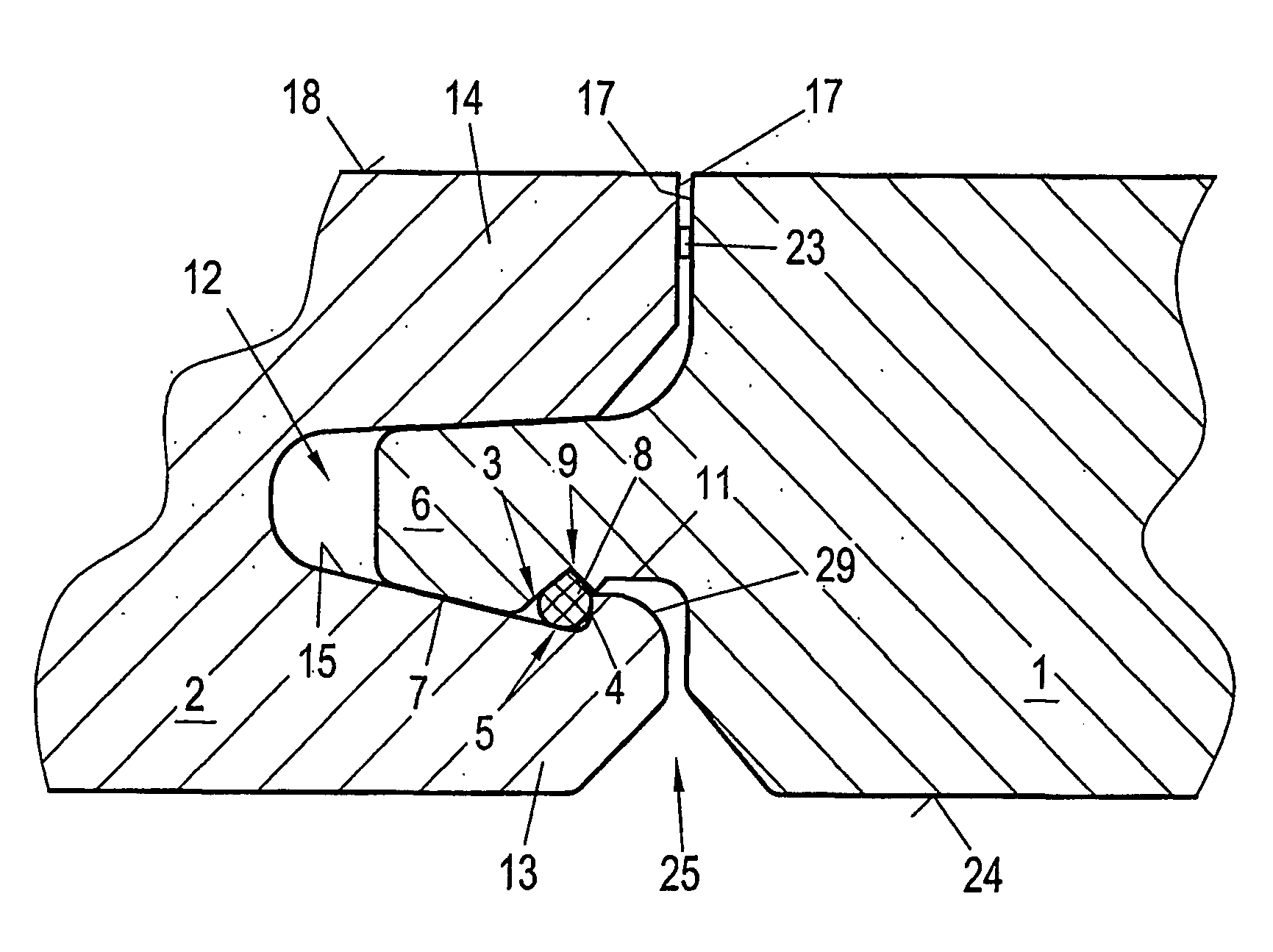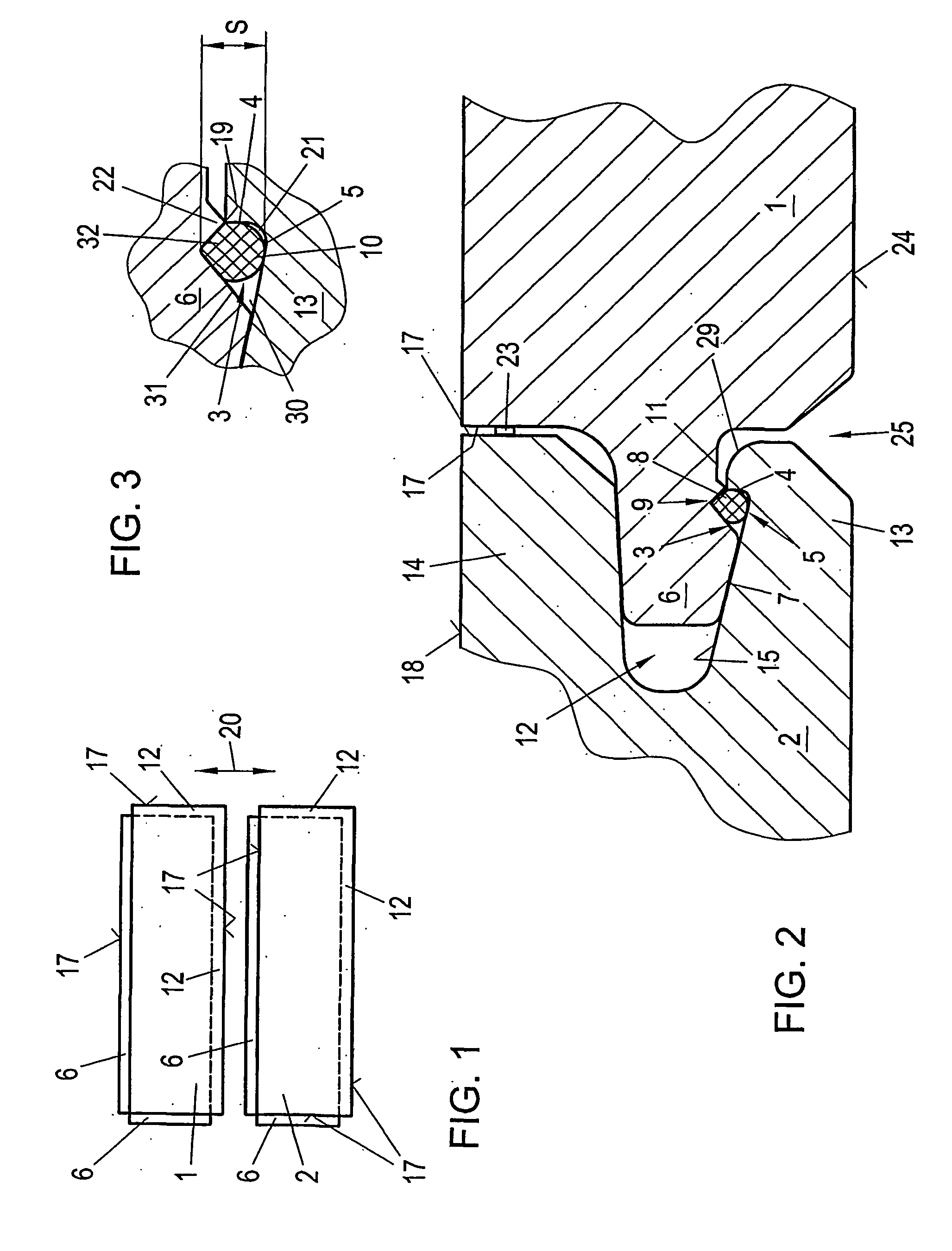Joining Panel
a joint panel and panel technology, applied in the field of covering panels, to achieve the effect of simple and fast operation, easy and economical storage over longer time intervals, and simple structur
- Summary
- Abstract
- Description
- Claims
- Application Information
AI Technical Summary
Benefits of technology
Problems solved by technology
Method used
Image
Examples
Embodiment Construction
[0038]FIG. 1 illustrates schematically two covering panels 1, 2 which are to be pushed to one another in the direction of arrow 20 and should be joined to one another. This joining by displacement, as the last joining step, can and should be carried out only in the plane spanned by the two panels 1, 2. On their longitudinal sides and / or their narrow side, the two panels each have a tongue 6, which projects from the front surface 17, and a groove 12 formed in the front surface 17 at the opposite longitudinal side and / or narrow side. The same conditions may prevail on the front surfaces 17 of the narrow sides; each of the panels 1, 2 may have a groove 12 and a tongue 6 on the front surface 17 of these narrow sides.
[0039]The shapes of the tongue and the groove are matched to one another in order to ensure a good connection between the groove and the tongue. This shape allows insertion of the tongue 6 into the groove 12, when the panels 1, 2 are aligned in the plane of the panels. It is...
PUM
 Login to View More
Login to View More Abstract
Description
Claims
Application Information
 Login to View More
Login to View More - R&D
- Intellectual Property
- Life Sciences
- Materials
- Tech Scout
- Unparalleled Data Quality
- Higher Quality Content
- 60% Fewer Hallucinations
Browse by: Latest US Patents, China's latest patents, Technical Efficacy Thesaurus, Application Domain, Technology Topic, Popular Technical Reports.
© 2025 PatSnap. All rights reserved.Legal|Privacy policy|Modern Slavery Act Transparency Statement|Sitemap|About US| Contact US: help@patsnap.com


